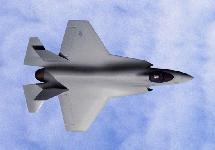[geek] 30-second science blogging - Wired's coverage of NASA's space elevator contest
The article is available here.

 I wonder what Langley would say about the JSF? Despite being an 'early adopter' of powered, heavier-than-air flight, would he have laughed at the idea of carbon composites, ceramic laminates, titanium components, and a top speed of Mach 1.8?
I wonder what Langley would say about the JSF? Despite being an 'early adopter' of powered, heavier-than-air flight, would he have laughed at the idea of carbon composites, ceramic laminates, titanium components, and a top speed of Mach 1.8?
With the flick of a switch, a searchlight beam illuminated a photovoltaic array, and a prototype space elevator called Snow Star One lifted off the ground. As the humble assemblage of solar cells, metal braces and off-the-shelf rollers rose slowly from the launch pad and up a long blue tether, a small crowd of spectators let out a boisterous cheer. The contraption, designed by University of British Columbia undergrads Steve Jones and Damir Hot, didn't get very far -- it managed to wriggle its way just 15 feet up the 200-foot-long tether before stalling out. But as the first competitor in the inaugural Space Elevator Games, even that modest performance was enough to cause a quite stir in the still-embryonic space elevator community. [...] Spaceward [(the non-profit foundation overseeing the competition)] board member Michael Laine, president of a Bremerton, Washington-based company called LiftPort that is seeking to commercialize space-elevator technology, noted that next year's games will up the ante considerably. While the already daunting thresholds will be set even higher, there will also be more money to entice competitors -- $100,000 for first prize, $40,000 for second and $10,000 for third. "I think that next year is going to be big," Laine said. "It's going to be harder, but I think there's going to be lots of people that rise to the challenge. We're at the beginning of something really great."When I mentally compare these steps with what I can only imagine would be involved in actually building an elevator, I can't help but think of Langley's Aerodromes compared to an F-22 Raptor or the JSF.

 I wonder what Langley would say about the JSF? Despite being an 'early adopter' of powered, heavier-than-air flight, would he have laughed at the idea of carbon composites, ceramic laminates, titanium components, and a top speed of Mach 1.8?
I wonder what Langley would say about the JSF? Despite being an 'early adopter' of powered, heavier-than-air flight, would he have laughed at the idea of carbon composites, ceramic laminates, titanium components, and a top speed of Mach 1.8?


0 Comments:
Post a Comment
<< Home